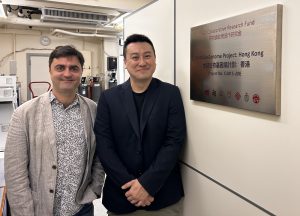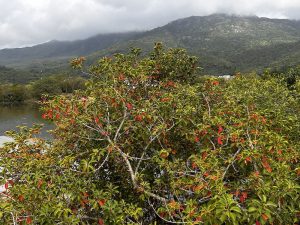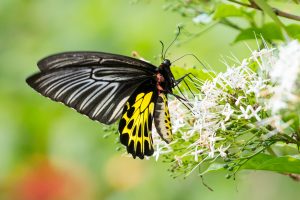DNA Day Launch for Hong Kong’s Moonshot for Biology
 The first emblematic species sequenced by the Hong Kong Biodiversity Genomics Consortium are published to coincide with International DNA Day. Joining a global “moonshot for biology” that aims to sequence, catalogue, and characterize the genomes of all of Earth’s eukaryotic biodiversity.
The first emblematic species sequenced by the Hong Kong Biodiversity Genomics Consortium are published to coincide with International DNA Day. Joining a global “moonshot for biology” that aims to sequence, catalogue, and characterize the genomes of all of Earth’s eukaryotic biodiversity.
A significant portion of modern knowledge in biology has emerged through sequencing the genetic code of the world’s biodiversity, which to date has been largely uncharacterized and increasingly threatened by climate change, habitat destruction, species exploitation, and other human-related activities. Hong Kong is a rich but threatened hotspot of biodiversity and home to over 3,000 species of plants, 570 species of birds, 25 species of amphibians, 90 species of reptiles, and 55 species of terrestrial mammals as well as more than 25% of the marine life recorded in China. And the territory has been shaped by its biodiversity, known as the “Fragrant Harbour” because of the native agarwood trees (see the related paper in GigaScience), and the emblem of the city being the Hong Kong Bauhinia (a mysterious hybrid flower species that GigaScience has been involved in decoding). A collective effort to sequence the genomes of these incredible natural resources of Hong Kong has just been launched, and the first five genomes are released today in GigaByte to coincide with International DNA Day. GigaBlog has regularly highlighted DNA Day each year, so this year it is good to highlight a project close to home.

Our EiC getting shown the project’s UGC-funded PacBio sequencer by Dr Jerome Hui.
Assembling researchers from all eight University Grants Committee-funded universities in Hong Kong, the Hong Kong Biodiversity Genomics Consortium formed to tackle this grand challenge. Also known as the EarthBioGenome Project Hong Kong, this effort aligns with and helps fill many of the geographic and species gaps in the Earth BioGenome Project (EBP), a global “moonshot for biology” that aims to sequence, catalog, and characterize the genomes of all of Earth’s eukaryotic (non-microbial) biodiversity over a period of 10 years. Bringing together a group of academics with expertise in biodiversity and genomics from the eight public universities were funded by a Collaborative Research Grant in the Hong Kong Grant Council, which obtained a genome sequencer helping to kickstart a network for future biodiversity genomics research in this region. The eight UGC-funded universities involved being University of Hong Kong, Chinese University of Hong Kong, Hong Kong University of Science and Technology, Hong Kong Polytechnic University, City University of Hong Kong, Hong Kong Baptist University, Lingnan University, and the Education University of Hong Kong.
Until now genomic data from Hong Kong’s species has been lacking, which has hindered the basic understanding of its rich biodiversity, as well as aid the utilisation of these genomic resources for a variety of purposes ranging from basic to applied science. Such benefits range from increasing the understanding of how biodiversity is evolving under climate change, conservation of endangered species, provision of ecosystem services, to discovering hidden biological knowledge for new technological inventions and development, as well as a sustainable future.

Hong Kong’s milky mangrove, showing some of the pristine and biodiverse habitats in Hong Kong
The project has initially been focusing on the organisms that are of high concern and great interest to Hong Kong, the local public was asked to nominate what species of animal, plant, and fungi they were most interested. After engaging the community to gather these wider views, work is now underway sequencing the first-10 iconic and diverse species. Asking the consortium about this wider outreach they say:
“Thus we have launched the species nomination call to the public. After obtaining the species list, we have discussed and narrowed down to start with those species with significant biological, ecological, cultural, and/or conservation values, and to obtain their genomes.” For the next steps the consortium says: “We have put in a new grant application aiming to sequence genomes of a group of animals together with secondary school students, NGOs, and postgraduate students.”
D-day for Hong Kong’s DNA Day
Being based in Hong Kong, GigaByte are proud to publish today the first five of these genomes that have different scientific and conservation values in the Asia-Pacific region. These first papers include the beautiful golden birdwing butterfly (Troides aeacus), important marine species including the common chiton (Liolophura japonic) and long-spined sea urchin (Diadema setosum), the edible jelly fungus Dacryopinax spathularia, and the milky mangrove (Excoecaria agallocha). Genomes of other emblematic and much-loved local species such as the black-faced spoonbill (Platalea minor) are also underway (see the preprint). These genomes are the cornerstone of the roadmap for Hong Kong’s eukaryotic genome resources and sequencing initiatives, and help it join countries and regions such as the British Isles, California and Chile in systematically sequencing local species to help understand, manage and protect regional biodiversity. This new series of papers being launched in GigaByte helps provide a home for the ongoing project and papers providing resources to assist the aims of promoting these efforts in Hong Kong. This joins other series bringing together thematic and taxonomic groups of species such as our snake genomes series (also hosting the genome of a Hong Kong species most commonly responsible for snakebite there, the white-lipped pit viper). If you have similar groups of genomes you are looking for a home for then please get in touch.

References:
Hong Kong Biodiversity Genomics Consortium. Series Page. GigaByte. 2024. https://doi.org/10.46471/GIGABYTE_SERIES_0006
Ding X et al. Genome sequence of the agarwood tree Aquilaria sinensis (Lour.) Spreng: the first chromosome-level draft genome in the Thymelaeceae family. Gigascience. 2020 Mar 1;9(3):giaa013. https://doi.org/10.1093/gigascience/giaa013
Hong Kong Biodiversity Genomics Consortium. Genome assembly of the milky mangrove Excoecaria agallocha. GigaByte. 2024. https://doi.org/10.46471/gigabyte.119
Hong Kong Biodiversity Genomics Consortium. Genome assembly of the edible jelly fungus Dacryopinax spathularia (Dacrymycetaceae). GigaByte. 2024. https://doi.org/10.46471/gigabyte.120
Hong Kong Biodiversity Genomics Consortium. Chromosomal-level genome assembly of the long-spined sea urchin Diadema setosum (Leske, 1778). GigaByte. 2024. https://doi.org/10.46471/gigabyte.121
Hong Kong Biodiversity Genomics Consortium. Chromosomal-level genome assembly of golden birdwing Troides aeacus (Felder & Felder, 1860). GigaByte. 2024. https://doi.org/10.46471/gigabyte.122
Hong Kong Biodiversity Genomics Consortium. Chromosome-level genome assembly of the common chiton, Liolophura japonica (Lischke, 1873). GigaByte. 2024. https://doi.org/10.46471/gigabyte.123
Hong Kong Biodiversity Genomics Consortium. Chromosomal-level genome assembly and single-nucleotide polymorphism sites of black-faced spoonbill Platalea minor. bioRxiv. [preprint] 2024. https://doi.org/10.1101/2024.04.08.588650